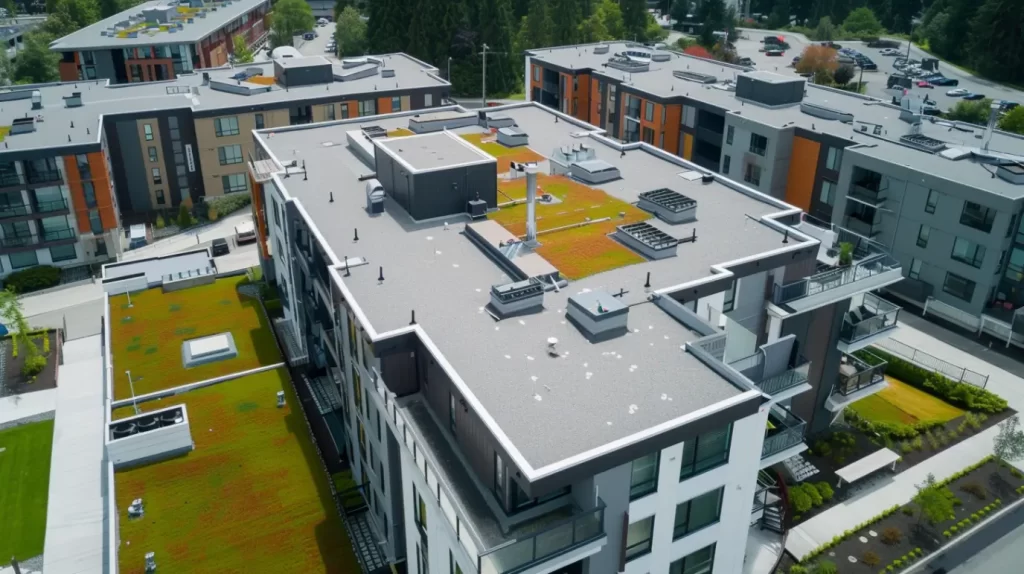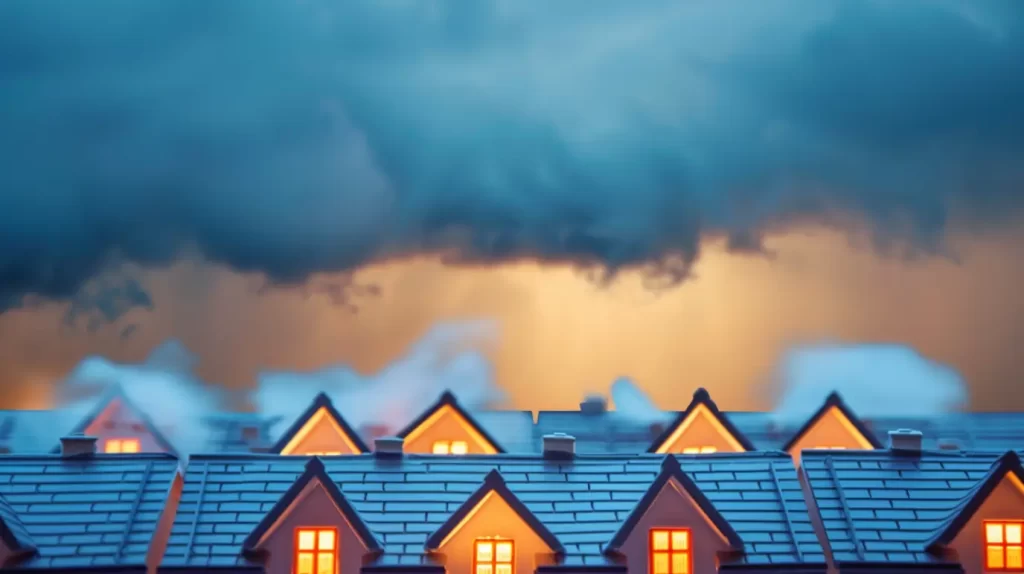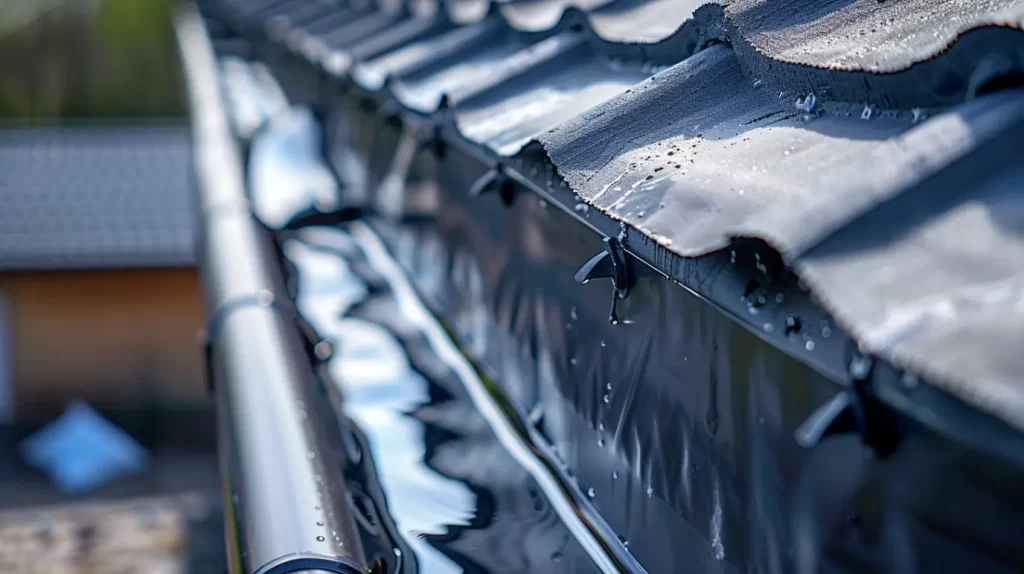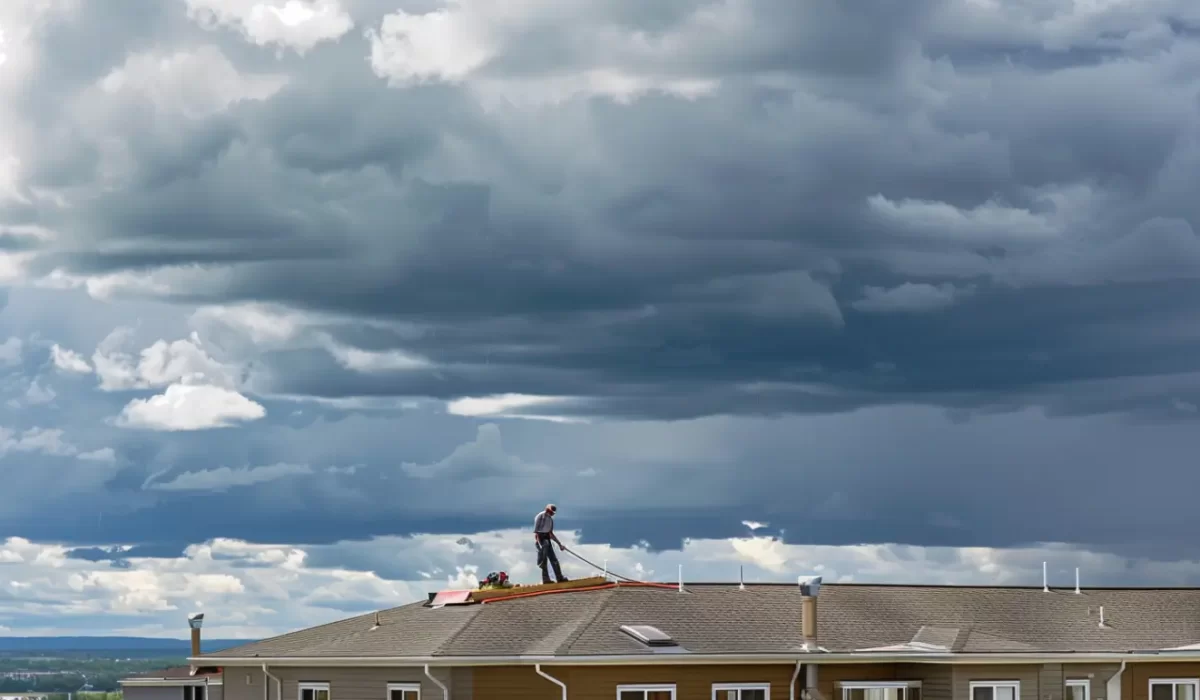Effective storm-readiness planning delivers peace of mind for property managers and HOAs overseeing commercial properties in Orange County, CA. Severe weather can strike without warning, so safeguarding your shared roofing system is essential for protecting tenants, assets, and the building’s value. At Fontaine Roofing, our expertise and award-winning credentials ensure your roof stands strong against even the harshest storm season. Through a combination of proactive steps, routine maintenance, and material upgrades, we help you minimize vulnerabilities and maintain the resilience your property demands.
Shared Roofing Systems in Multi-Tenant Buildings
Shared roofing systems in multi-tenant buildings pose unique challenges due to diverse stakeholder needs. Maintenance becomes complex, as issues with drainage, insulation, or flashing affect multiple units and overall integrity. A storm readiness plan requires clear communication, defined roles, and proactive inspections. Key steps include coordinated maintenance, timely upgrades, and collaboration to address vulnerabilities before severe weather. As a GAF Master Elite Contractor and CertainTeed Shingle Master, we prioritize quality. Our Polyglass Preferred Contractor status and IB Roofing Systems Authorized Applicator designation, along with TRI certification and memberships in CACM, CAI, and NRCA, ensure reliability for all stakeholders.
Contact Us
Key Characteristics of Shared Commercial Roofs
Shared commercial roofs serve multiple occupants in office complexes, apartments, and retail centers. They must withstand foot traffic, support mechanical installations, and ensure proper drainage. Strong insulation is vital for tenant comfort and energy efficiency.
Building managers play a crucial role in storm preparedness by coordinating inspections, cleaning, and emergency plans. Regular meetings with property managers, HOAs, and roofing contractors clarify responsibilities and keep everyone informed about the roof’s condition.
Effective drainage systems, reliable insulation, and clear access points enhance resilience. Engaging all stakeholders minimizes confusion and fosters a unified response during severe weather.
Challenges Unique to Multi-User Roof Structures
Coordinating multiple tenants presents unique challenges in managing shared roofing systems. Maintenance discrepancies can create vulnerabilities, risking water infiltration and structural integrity. A lack of a unified emergency response plan may leave areas exposed during storms, increasing the risk of significant damage from heavy rainfall or high winds.
Communication issues often arise over necessary repairs, such as missing shingles or poor drainage, which can escalate if neglected. Diverse tenant needs can complicate decision-making and storm preparedness. Proactive measures like regular inspections and tenant collaboration are vital for enhancing resilience against severe weather.

Assessing Storm Vulnerabilities in Shared Roofing Systems
Before the next storm season, it’s vital to assess your shared roofing system for vulnerabilities. Weak points like worn flashing, inadequate insulation, or outdated drainage can invite storm damage, especially during high winds and heavy rainfall. An informed inspection identifies these risks and provides a roadmap for repairs and upgrades.
Property managers and HOAs must work together to pinpoint these issues, prioritizing areas most susceptible to water infiltration and structural stress. Understanding your roof’s condition ensures timely action and reduces the potential for costly damage.
Common Weak Points Exposed During Severe Weather
Severe weather can reveal vulnerabilities in shared roofing systems, threatening their structural integrity. Common issues include missing or loose shingles that allow water infiltration, leading to significant damage and mold growth. Inadequate drainage can cause water pooling during heavy rain, worsening problems for tenants and property owners.
Flashing around vents and chimneys is a weak point that can fail under strong winds or heavy snow. Regular inspections and timely upgrades are crucial, particularly during hurricane season. Proactive measures enhance resilience, ensuring shared roofs effectively defend against extreme weather.
Risks Associated with Hurricanes and High Winds
Hurricanes and high winds pose significant risks to shared roofing systems, potentially compromising the structural integrity of commercial properties. High winds can detach loose shingles, creating weak points vulnerable to water infiltration. Poorly maintained drainage systems and gutters can lead to leaks from heavy rainfall, resulting in costly repairs and mold growth.
During hurricane season, property managers must take proactive measures like reinforcing roofs and installing storm shutters to enhance resilience. Understanding these risks and maintaining vigilance ensures a robust emergency response plan, safeguarding the property and providing peace of mind for tenants.

Routine Maintenance for Pre-Storm Resilience
Routine maintenance is essential for building pre-storm resilience in any shared roofing system. Regular inspections, proactive repairs, and scheduled cleaning help maintain your roof’s condition and prevent larger problems from developing during severe weather. These proactive steps not only safeguard structural integrity but also extend the lifespan of your commercial roofing system.
By partnering with experienced contractors like Fontaine Roofing, property managers can stay ahead of storm season and ensure that every vulnerability is addressed before it leads to costly repairs or operational disruptions.
Essential Inspection Checkpoints and Schedules
Regular inspections are essential for maintaining shared commercial roofs. A routine schedule identifies vulnerabilities, like loose shingles or compromised flashing, before costly repairs are needed. Key checkpoints include assessing drainage systems to prevent water infiltration, checking for mold, and ensuring gutters and downspouts are clear.
During storm season, prioritize inspecting storm shutters and roofing materials for high winds. An emergency response plan with set inspection dates and responsibilities enhances preparedness, offering peace of mind for tenants and protecting the property from extreme weather. Consistent evaluations reduce the risk of significant damage during heavy rainfall or hurricanes.
Best Practices for Preventive Repairs
Regular inspections are vital for emergency response plans in shared roofing systems. Biannual assessments can catch vulnerabilities, such as missing shingles or damaged flashing, before they lead to costly repairs. Proper drainage is essential; clogged gutters can cause water infiltration and significant structural damage.
Proactive measures—like reinforcing weak points with quality materials and applying sealants—boost the roof’s resilience against severe weather. Timely damage repairs preserve structural integrity and reassure tenants. Keeping inspection and repair records simplifies insurance claims and restoration efforts after storms. Regular maintenance is an investment in resilience, ensuring roofs endure harsh storm seasons.

Material Selection and Design Enhancements for Storm Resistance
Choosing the right roofing materials and design enhancements is a game-changer for storm resistance in shared commercial properties. Upgrades such as high-performance membranes, durable shingles, and advanced insulation add an extra layer of protection against high winds and heavy rainfall. Fontaine Roofing partners with industry leaders like GAF, Certainteed, and Polyglass to deliver resilient systems tailored to withstand Orange County’s severe weather.
Evaluating material choices and incorporating design features built for durability ensures that your property is prepared for whatever storm season brings.
Top-Rated Storm-Proof Materials for Commercial Roofs
Choosing the right materials boosts a roof’s resilience to extreme weather. Brands like GAF and CertainTeed offer durable, storm-proof options. For low-slope roofs, GAF’s TPO and Polyglass‘s EPDM are popular for their UV resistance and water protection. CertainTeed’s metal roofing withstands high winds and heavy rain, providing essential defense. Quality sealants and flashing from these brands reinforce vulnerable areas, minimizing leak and mold risks. Together, these materials create a robust roofing system ready for storms.

Documentation and Damage Assessment Post-Storm
After a storm, thorough documentation and rapid damage assessment are essential for restoring your shared roofing system and validating insurance claims. Detailed records and photographic evidence streamline the claims process and speed up restoration, minimizing costly downtime for tenants and property owners alike. Fontaine Roofing partners with HOAs and property managers to ensure every step—from initial review to final validation—is handled accurately and efficiently. Proper documentation not only simplifies insurance claims but also serves as proof of diligent storm preparedness.
Streamlining Insurance Claims for Shared Roofing Losses
Efficiently managing insurance claims for shared roofing losses requires an organized approach to multi-tenant structures. A clear emergency response plan is essential for storm damage defense. Documenting the roof’s condition with photos and maintenance records before storm season is crucial for validating claims.
Partnering with a roofing contractor experienced in multi-user systems can streamline the process by assessing structural integrity and identifying post-storm vulnerabilities. Utilizing technology, like social media and cloud storage, enhances tenant communication for quicker damage reporting. This proactive strategy minimizes disruptions, lowers repair costs, and ensures peace of mind for all stakeholders.
Trust the Experts
Effective storm readiness for shared roofing systems is essential for property managers and HOAs in Orange County, CA, to protect their assets during severe weather. By understanding multi-tenant roof challenges, performing routine maintenance, and choosing the right materials, you can greatly improve your roofs’ resilience. Proactive measures not only prevent damage but also expedite recovery after storms. If you’re ready to prepare your roofing systems for any weather, contact our experts at Fontaine Roofing in Orange County, CA. Your peace of mind is our priority.
Read our blog: Best Seasonal Windows for Large-Scale Roof Replacements
Frequently Asked Questions
How often should shared commercial roofs be professionally inspected for storm-readiness?
Shared commercial roofs should be professionally inspected at least twice a year—before and after storm season—to ensure they remain storm-ready. Regular inspections by an experienced roofing contractor help maintain structural integrity, identify vulnerabilities, and keep your property protected against severe weather.
What specific maintenance tasks can maximize roof resilience before storm season?
Key maintenance tasks include cleaning gutters and downspouts, checking for leaks, reinforcing flashing, inspecting for loose or missing shingles, and sealing vulnerable areas. Addressing these issues proactively maximizes resilience and prepares your shared roofing system for heavy rainfall and high winds.

